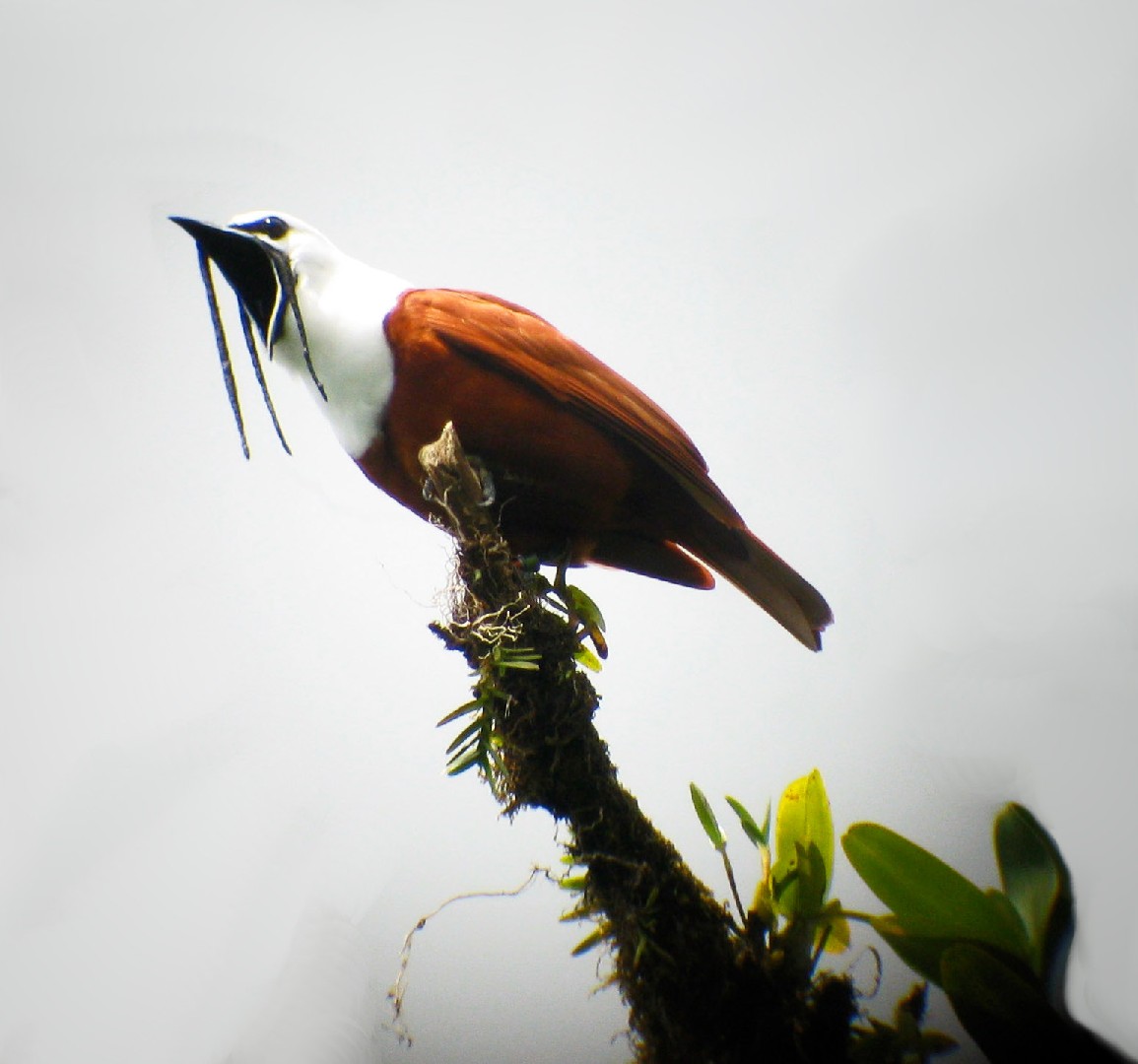Three-wattled Bellbird
A species of Neotropical Bellbirds Scientific name : Procnias tricarunculatus Genus : Neotropical Bellbirds
Three-wattled Bellbird, A species of Neotropical Bellbirds
Botanical name: Procnias tricarunculatus
Genus: Neotropical Bellbirds
Content
Description General Info
Description
One of four species of bellbird that live in Central and South America, the three-wattled bellbird is between 25 cm (9.8 in) and 30 cm (12 in) long. The body, tail, and wings of the male are uniformly chestnut-brown; its head, neck, and upper breast are white; and it has a black eye-ring, eye-stripe, and bill. Its name comes from the three worm-like wattles of skin that hang from the base of the bill. These wattles can be as long as 10 cm (3.9 in) when extended during songs and interactions. The wattles remain flaccid even when extended. The male shakes the wattles, but otherwise they hang straight down; they are neither erectile nor under muscular control. The side wattles do not stick out to the sides and the central one is not extended directly skywards as shown on some old illustrations and specimens. The purpose of the wattles is unclear. The female bellbirds are smaller and less striking in appearance, being overall olive with yellowish streaking below, pure yellow vent and no wattles. The females blend into the surroundings of the forest, which helps them hide its nests from predators. The nests are very difficult to spot. As of January 2019, only six nests had been found in Monteverde, according to the council for the Bellbird Biological Corridor. Juvenile males are often confused with females; they have the same coloring as females until they reach sexual maturity at age 7. As they age, the males slowly molt the green and brown feathers and begin to grow the striking white and copper coat. They do not begin to grow their wattles until they are 1 to 2 years old, and the wattles continue to grow for the entirety of the male bird's life. 
Size
25 - 30 cm
Nest Placement
Tree
Feeding Habits
Three-wattled Bellbird, primarily a frugivore, consumes a diet rich in drupes and berries. Three-wattled Bellbird forages for food among the tree canopies, using its beak to pluck fruits, a behavior underpinned by its unique adaptations for such a diet.
Habitat
Three-wattled Bellbird are typically found in the dense canopy layers of humid broadleaf mountain forests. Their preferred habitat includes the upper regions of the forest where the foliage is thick, often making them hard to spot unless they are vocalizing. These birds inhabit the high trees within montane environments across broader geographical regions that sustain tropical or subtropical climates.
Dite type
Frugivorous
General Info
Feeding Habits
Bird food type

Fruit
Distribution Area
Famous for having one of the most unusual and distinct vocalizations of any bird in its range, the three-wattled bellbird exists from western Honduras south to eastern Panama. Bellbirds breed primarily in Costa Rican highlands in the cloud forest (March–September) and return to lower elevations in the mangroves for the interim months. 
Species Status
Not globally threatened.
Scientific Classification
Phylum
Chordates Class
Birds Order
Perching birds Family
Cotingas Genus
Neotropical Bellbirds Species
Three-wattled Bellbird 